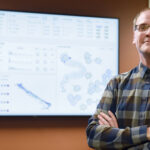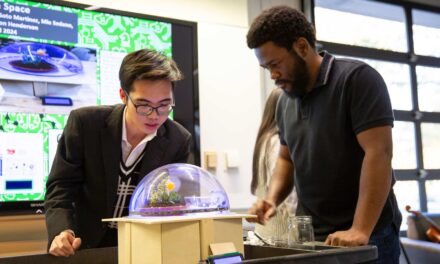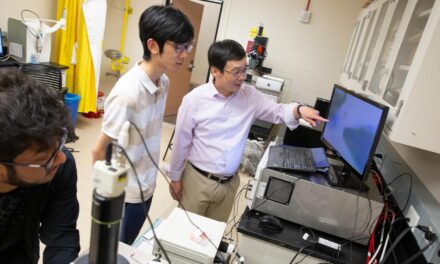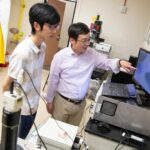
Microgrids: Small-scale systems can have big impact on global energy challenges
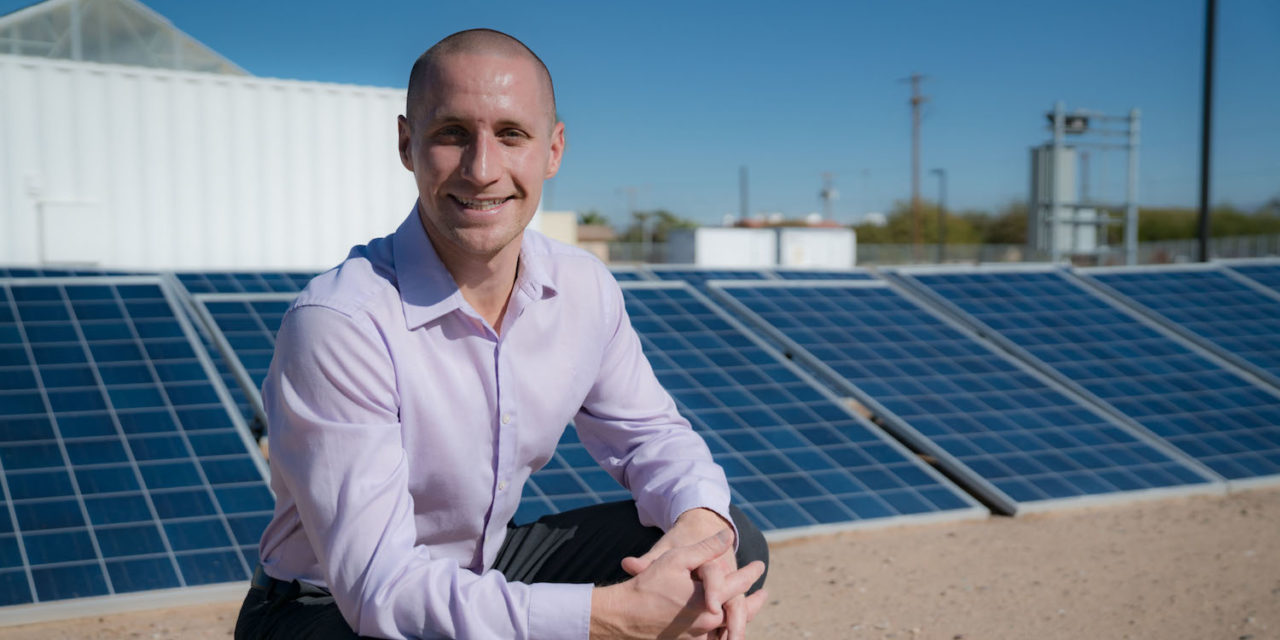
Above: Nathan Johnson is pictured at the Grid Modernization and Microgrid Test Bed on Arizona State University’s Polytechnic campus. The Fulton Schools assistant professor’s research team is making advances in microgrid technologies to provide communities with more reliable, adaptable, resilient and affordable energy. Photographer: Krisanna Mowen/ASU
Nathan Johnson’s research is playing a significant role in the quest to overcome energy poverty throughout the world.
As many as 1.3 billion people lack access to electrical power, says Johnson, who directs the Laboratory for Energy And Power Solutions, called LEAPS, at Arizona State University.
The primary focus of his lab’s research and industry collaborations is advancing technologies for electrical grid modernization and off-grid electrification.
One of his solutions is microgrids, which provide independent power generation and storage systems capable of operating as mobile or standalone systems or as a supplemental part of larger conventional power grids.
“Advances in microgrid technology can bring stable power resources to even the most remote and poor communities,” says Johnson, an assistant professor in ASU’s Ira A. Fulton Schools of Engineering’s Polytechnic School.
Better microgrid technology would also vastly improve energy supply scenarios for military and disaster relief operations, hospitals and data centers, as well as for industries such as mining or oil exploration and drilling that often need mobile, off-grid power generation. Large public infrastructure operations, critical emergency services and aviation operations would also benefit.
|
Microgrid Workforce Development at Arizona State University |
Reducing time for microgrid design
Johnson and his LEAPS team — currently 20 students and four staff members — are at work making those off-grid power systems a more technically and economically viable option.
One of the lab’s strategic partners is XENDEE, a California-based company that develops cloud computing solutions for microgrid and smart grid project management and power system analysis.
LEAPS and XENDEE have together taken on the challenge of figuring out how to create simulation technologies that will integrate myriad technical, financial, public policy and regulatory factors into a methodology for designing and building customized microgrids much faster than is feasible at present.
Their approach and their tools make it possible for users to design a microgrid in days rather than weeks.
That feat was recognized recently when XENDEE’s computer simulation software and Johnson’s approach to military microgrids won a TechConnect Defense Innovation Award at the Defense Innovation Technology Acceleration Challenges Summit — a conference of leaders in defense, security and technology industries, along with U.S. government and military officials.
Industry, military collaborations produce progress
Another goal is to produce designs that make microgrids more modular and scalable.
“We want microgrids that can be increased in size seamlessly and adapt their functions as the needs of communities and other users grow and change,” says Johnson, who is also a Senior Sustainability Scientist with ASU’s Julie Ann Wrigley Global Institute of Sustainability.
Two other LEAPS projects are putting the lab’s microgrid system concept-to-construction skills into action.
Collaborating with FastGrid a company based in Queen Creek, Arizona, Johnson and his team have been able to see their designs and technologies employed in mobile microgrids that the company is producing and commercializing.
The FastGrid Solo is a microgrid that can be quickly disassembled, easily transported and reassembled, and it provides a fully independent system for clean power generation, with options for water purification and communications capability.
Working with the Office of Naval Research through its NEPTUNE Initiative (Naval Enterprise Partnership Teaming with Universities for National Excellence), Johnson’s team is also developing the interfaces and controls to combine advanced microgrid technologies in a fashion similar to the way LEGO building blocks fit together.
Those projects display the versatility and resiliency of the technologies and systems that LEAPS and it collaborators are creating.
These microgrids make use of renewable energy sources — including solar power, wind, biodiesel fuels and lithium-ion battery storage — and feature advanced systems controls that help lower operation costs while ensuring more overall system dependability.
Building the workforce to modernize power grids
Johnson is developing many of these innovations at the one-acre Grid Modernization and Microgrid Test Bed on ASU’s Polytechnic campus.
His projects are also demonstrating advances in stronger fortifications to protect microgrid systems against theft, cyberattacks and extreme weather events.
Beyond all that, Johnson’s work includes efforts to bolster workforce development for the energy industry.
“As much as all the advanced technologies, we also need highly trained people if we’re going to help modernize the grid and provide power to off-grid communities,” Johnson says.
LEAPS has been conducting courses and other educational activities, including a “Microgrid Boot Camp,” to teach system design, operation, installation and maintenance to industry engineers and technicians as well as entrepreneurs and students. More than 100 have undergone instruction in the past two years — nearly all of them are U.S. military veterans.
Participants go through an intense hands-on one-week professional development course in computer simulation-based design and system integration.
Says Johnson, “If we can help provide power that is clean and renewable, that reduces the costs of energy and is transportable and adaptable to different environments, our work could go a long way toward meeting basic needs and providing a platform for economic development around the world.”




